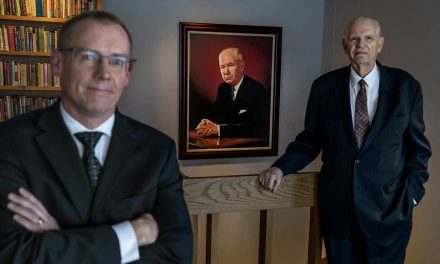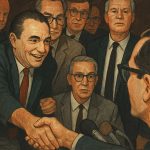
Why the issue of race matters and a long path across is contours in America, from the Jim Crow South to Milwaukee.
My great-grandfather Edward Diltz was born in Tillatoba, Mississippi in 1890, twenty-five years after legalized slavery ended in the land of the free and the home of the brave. Papa, as we called him was a tall, thin man who could have easily passed for white due to the light complexion he inherited from a white grandfather on a small cotton plantation in the northern edges of the Mississippi Delta. He moved his family to Charleston, the county seat of Tallahatchie County, as a young man. He was a skilled carpenter and purchased, from a former pig farmer, a plot of land that he transformed into homes.
I was born in that town and grew up as a young boy on the same ground that pigs joyfully rolled around in their filth. It was a Jim Crow town. Separation of the races was strictly enforced. Separate water fountains, dressing rooms, and seating in the courthouse. As a child I went to swim in the “blacks only” swimming pool. There were no signs by that time but we all knew that the two pools were to be occupied by different people on those hot days of spring and summer. The U.S. Supreme Court had ruled twenty-one years before I was born that segregated schools were unconstitutional. The high school in Charleston still has separate proms for its black and white students to this day.
Mississippi, like many other states, resisted the law and refused to integrate its schools for many years. By the time I started school my town had complied with the instructions of the court and allowed black and white children to attend school together. In 1973 my family moved to Milwaukee. I was seven years old and lived in a house on 18th Street just north of Meinecke Avenue.
My first school was then called 20th Street School. After going to school with white children in the most strongly segregationist state in the country, I attended school with only black classmates from 3rd through 8th grades in Milwaukee. Little did I know that I was living in one of the most segregated cities in the country. By ninth grade I caught a city bus to the south side and went to school with whites for the first time since leaving Mississippi six years earlier.
The rules of race were all around but completely invisible to me. I did not recognize segregation as a child. Jim Crow signs often designated separate racial spaces in Mississippi. Milwaukee had Jim Crow spaces too. Blacks and whites were treated differently in stores, schools and lived in different neighborhoods. Racially restrictive covenants prevented blacks from moving out of the central city into the suburbs. These covenants were enforceable by law and in most places stated that only blacks who were domestic workers could occupy spaces in the homes of their white employers.
Race followed me around my entire life without me really noticing. As a young man I joined the U.S. Navy and served on the most famous ship in the fleet, the USS Missouri. The Japanese Emperor signed the treaty ending World War II on that ship in 1945. I was trained as an electrician and lived in a berthing compartment with about forty shipmates. One of my superiors introduced himself to me by telling me he “hated niggers.” I was nineteen or twenty and remember those words as if they were spoken yesterday.
It was my first time feeling race that I can remember. Prior to that moment I had lived in a world insulated from race by ignorance. I knew about the struggles of the Civil Rights Movement from school but did not get it. Many years later I would meet a man who opened my eyes and set me on the path to being what people would call a social justice activist. His name was James Cameron, founder of America’s Black Holocaust Museum and a living survivor of a lynch mob.
Dr. Cameron would become my friend and mentor. He taught me how to research the history of our confusing nation. He loved the law, especially the U.S. Constitution. He thrived in an environment that required strict adherence to the ideals of the Founding Fathers. His vision was of a nation that would live up to the fundamental ideals of the first free Republic founded on the shores of North America. He taught me about his desire to help create a nation that was inhabited by one “single and sacred nationality.”
I’ve taken to this work with a ferocity that matches nothing I’ve ever done before in my life. I’ve been lecturing, presenting and teaching about race since 2002 here in Wisconsin and outside our borders as well. I get a tremendous amount of satisfaction out of this work. People ask me all the time why I do what I do, talking about this ugly aspect of American life. I respond by telling them that race is as American as apple pie.
The contours of my life have been impacted by real and hidden racial rules since I was born in a segregated hospital in Mississippi over fifty-one years ago. My mother was forced to enter the “blacks-only” back door of the hospital on that eighty-one degree day I was born. I was fully a grown man before I understood the power of race rules. I feel compelled to study this history and share these stories. As a child of Jim Crow Mississippi and equally Jim Crow Milwaukee I am uniquely qualified to share this history.
I’ve dedicated my life to social justice work because I want to live at least one day in a nation that judges people by the content of their character as Dr. King proclaimed two years before I was born. It’s a worthy cause and benefits us all. In a society that embraces justice all Americans’ lives will be enriched.
Originally published by the Wisconsin Humanities Council as Race Matters: My Journey Along the Contours of Race in America
The Wisconsin Humanities Council supports and creates programs that use history, culture, and discussion to strengthen community life for everyone in Wisconsin.
Charleston, Mississippi. Reggie Jackson in 1970 at age 5, next to his cousin Rose with his great-grandparents Lonnie T. and Edward Diltz in front of the home where Reggie grew up.














